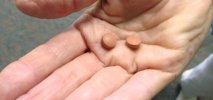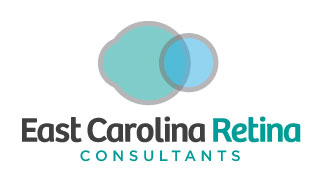New Treatment for Macular holes
Recent approval of Jetrea (Ocriplasmin) to treat symptomatic VMA (Vitreo Macular Adhesion) has opened up a new era in non surgical management of macular holes. Previously only a hospital based surgery was able to reverse the process of macular hole development but now a new drug can be injected into the eye painlessly in the office and within a few weeks the process reverses back to more normal vision levels.... more
FDA Approves ASRS Leader's ArgusŪ II Artificial Retina
On February 14, the FDA approved the Argus II artificial retina developed by ASRS Executive Committee and Board Member Mark S. Humayun, MD, PhD.
This breakthrough technology is the first ever to offer limited vision to patients with late-stage retinitis pigmentosa (RP).
Second Sight Medical Products (Sylmar, CA) manufactures the Argus II implant, which has 60 electrodes and a tiny camera mounted on eyeglasses to capture images.
The FDA approved Argus II for adults age 25 years or older with severe to profound RP. About 10,000 to 15,000 of the 100,000 Americans with RP will qualify for Argus II. Up to 4,000 patients a year can be treated with the device.
Macular degeneration and Aspirin?

Aspirin and Macular degeneration... is there an increase in the wet form of macular degeneration in those patients taking aspirin? The wet form develops quicker than the dry form. It may only be related to the fact that you are more likely to take aspirin if you have medical problems like stroke or heart attacks in the past and these conditions are more commonly associated with wet age related macular degeneration. ... more

Our Physician
Peter A. Van Houten, MD
During his undergraduate years of college, Dr. Van Houten discovered the early love for computing that would lead him to new developments in the ophthalmology field. One evening, while working the graveyard shift as a condominium complex security guard to pay for college expenses, he programmed his own custom “Battleship” game on his programmable calculator, and thus his love of programming was born.
Aspiring to attend medical school following graduation, and desiring an easy “A” to boost his GPA, Dr. Van Houten enrolled in an honors communications class. At the same time, he took a Fortran computer language programming class to continue his education in computers. Before the end of the semester, enlisting the help of peers that were computer majors, he completed a project for testing the limits of stereoscopic vision processing in the brain and eye. This work was used several times to publish research articles and a book on the subject by his co-workers.
Following graduation, Dr. Van Houten attended Medical School at the University of Miami, Florida, and subsequently completed his internship in internal medicine at neighboring Jackson Memorial Hospital, also run by the university. Discovering an interest in ophthalmology, he subsequently completed his residency in the field at the University of Maryland Hospital in Baltimore, Maryland.
Working out his fellowship in 1986-88 at the University of Illinois Eye and Ear Infirmary in Chicago, IL, Dr. Van Houten continued to expand his knowledge of vitreo-retinal care as well as computer programming. During his fellowship, he wrote programs in Lisp and other computer languages trying to create the first report generator for fluorescein angiography, a diagnostic imaging technique used to view the retina.
In 1993, Dr. Van Houten opened the doors to East Carolina Retina Consultants on February 22nd. Desiring to streamline the process of collecting medical records and centralize all data in a user-friendly format, he wrote his own medical records program that went live in 1993 as well. To date, the system still successfully manages over 150,000 records. As he treated patients, Dr. Van Houten grew frustrated with the poor quality of diagnostic images that would come from existing systems. Continuing in the spirit of innovation and combining a typical fundus camera with the one of the early high resolution Kodak/Nikon digital cameras, he developed his very own imaging hardware and software to compile high resolution digital images of the retina. Utilizing the new hardware and software quickly revolutionized the way vitreo-retinal diseases were diagnosed, giving Dr. Van Houten the ability to locate precursors to retinal conditions, such as macular holes, as early as four years before a patient would even experience symptoms. For a time, Dr. Van Houten marketed and sold the hardware and software to other ophthalmologists and retina specialists under the name EyeExpert, LLC.
The same cutting edge diagnostic imaging technology is still used and constantly improved by Dr. Van Houten today in practice at East Carolina Retina Consultants, along with a new, six-mode digital imaging/scanning system from an outside developer.
Dr. Van Houten has been an American Board of Ophthalmology Diplomat since 1992 and has recertified every ten years since passing the boards initially. When he is not serving patients at East Carolina Retina, he serves as an Assistant Clinical Professor at the Brody School of Medicine. He has taught residents and fellows there since 1988. He has also presented on multiple subjects at the yearly national meeting of the American Academy of Ophthalmology from 1998-2008.
He aspires to continue providing advanced medicine through technology and personalized patient care as long as he is able.
Current Activity:
Advisory Board Member to eyeTech Pharmaseuticals
Advisory Board Member to ThromboGenics, Inc
Outside Web pages:
On digital imaging originally published in 1999-2000 for Kodak on their web page:
http://www.kodak.com/US/en/corp/features/digitalInnovators/
On computer use and electronic records on the Apple web page was present for 10 years however is not available currently.







